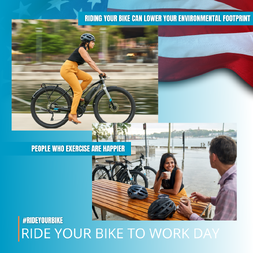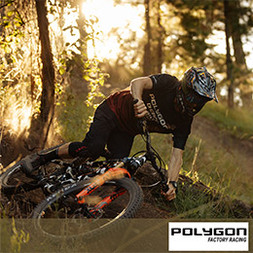Mountain Bikes vs. Road Bikes: Which Is Safer for Your Cycling Adventures?
Discover the safety dynamics between mountain bikes and road bikes. Learn which bike offers more security in various conditions and how to choose the right one for your riding style. Discover the safety dynamics between mountain bikes and road bikes. Learn which bike offers more security in various conditions and how to choose the right one for your riding style.
Mountain Bikes and Road Bikes
Mountain bikes (MTBs) and road bikes are designed for distinctly different purposes and terrains, each tailored to enhance performance and safety within its specific environment. Understanding the fundamental differences between these two types of bicycles is crucial for cyclists who are choosing the right bike for their activities and seeking to maximize safety.
Mountain Bikes: Designed for Rugged Terrains
Mountain bikes are built to handle rough, off-road terrains. They come equipped with features such as wide, knobby tires for increased traction on unstable surfaces like dirt, mud, and gravel. The frame geometry of a mountain bike is designed to enhance rider stability and control when navigating through uneven tracks and over obstacles. Moreover, mountain bikes often feature advanced suspension systems—either front only or both front and rear—to absorb the shocks from bumps, rocks, and other rough terrain features, making them safer and more comfortable in wild environments.
Road Bikes: Engineered for Speed and Efficiency on Paved Roads
In contrast, road bikes are engineered for speed and efficiency on paved surfaces. They feature lightweight frames and skinny tires that reduce rolling resistance and allow for faster speeds. The posture adopted on road bikes is more aerodynamic, reducing drag and enabling cyclists to maintain higher speeds with less effort. However, this design prioritizes speed over comfort, with minimal or no suspension, which can make road bikes less stable on uneven or slippery surfaces. Road bikes are ideal for commuting, racing, and long-distance rides on well-maintained roads.
Intended Uses and Typical Environments
Each type of bike excels in its environment. Mountain bikes are the preferred choice for adventure enthusiasts who enjoy trail riding and exploring rugged landscapes. Their safety features are optimized for managing the challenges posed by off-road conditions. Conversely, road bikes are best suited for cyclists who ride primarily on city streets and paved bike paths, where the risks include navigating traffic and maintaining control at higher speeds.
By choosing the appropriate bike for their preferred terrain, cyclists can enhance their riding experience and ensure a safer ride, whether they are scaling a mountainous trail or cruising along a cityscape.
Design and Build
Comparison of Frame Structures
Mountain Bikes: Robustness for Rough Terrains
Mountain bikes are constructed with durability and resilience in mind. The frames are typically made from materials like aluminum, steel, or carbon fiber, which offer a balance between strength and weight. These frames are built to withstand the rigors of off-road cycling, featuring thicker tubes and reinforced joints that handle shocks and stresses from rocky, uneven trails. The geometry of a mountain bike frame is also designed to enhance stability: it often has a slacker head angle, which provides better control on steep descents and rough terrain.
Road Bikes: Lightweight Frames for Speed
Road bike frames are optimized for speed and long-distance efficiency on paved roads. They are generally lighter than mountain bike frames, utilizing materials such as lightweight aluminum, titanium, and often carbon fiber to reduce overall weight and increase aerodynamics. The frame geometry of road bikes promotes an aggressive riding position, allowing for better aerodynamics and increased speed. However, these frames are less equipped to handle impacts from rough surfaces and are more susceptible to damage when used off-pavement.
Tire Types and Traction
Mountain Bike Tires: Grip and Stability Off-Road
Tire design is critical for mountain bikes as it directly impacts traction and stability on varied terrains. Mountain bikes feature wide tires with deep, aggressive treads that grip onto loose or muddy surfaces, providing stability in unpredictable conditions. These tires are also generally thicker and more resistant to punctures than road tires, equipped to handle obstacles like rocks and roots commonly found on trails.
Road Bike Tires: Efficiency and Speed on Smooth Surfaces
In contrast, road bikes sport narrow tires with minimal tread patterns designed to maximize contact with smooth surfaces for increased speed and reduced rolling resistance. The lighter and thinner design of road bike tires aids in faster acceleration and easier climbing on paved roads. However, this makes them inherently less stable on wet or uneven surfaces and more prone to punctures from debris commonly found outside of well-maintained roads.
Influence on Safety and Performance
The differences in tire design between mountain and road bikes reflect their intended uses and influence safety significantly. Mountain bike tires are better suited for absorbing impacts and maintaining control in challenging environments, thereby reducing the risk of accidents on rough terrain. On the other hand, road bike tires enhance speed and efficiency on asphalt but require more caution in adverse weather conditions or on poorly maintained roads where the risk of slipping or puncturing increases.
By understanding these design distinctions, cyclists can make informed decisions about which type of bike best suits their riding needs and safety requirements, ensuring optimal performance and protection in their chosen environments.
Typical Riding Environments
Mountain Bikes: Navigating Off-Road, Rugged Terrains
Mountain bikes are specifically engineered to tackle off-road and rugged terrains, making them ideal for adventure enthusiasts who prefer trail riding, mountainous explorations, and navigating through natural landscapes. These environments typically include:
- Trails and Singletracks: Narrow paths that require high levels of technical skills due to obstacles like roots, rocks, and sudden changes in elevation.
- Mountainous Areas: Steep ascents and descents where control and stability are paramount.
- Forest Paths: Surrounded by dense foliage, these paths often feature uneven ground and soft surfaces like leaves and mud.
Safety Features for Off-Road Riding: To enhance safety in such unpredictable conditions, mountain bikes include several specialized features:
- Suspension Systems: Full (front and back) or front-only suspension helps absorb shocks from bumps and obstacles, reducing rider fatigue and maintaining control.
- Wide, Knobby Tires: These provide better grip and stability on loose surfaces such as gravel and wet mud.
- Robust Frame Design: Stronger frames and wider handlebars offer better control and maneuverability through tight spots and over obstacles.
- Lower Gears: They facilitate climbing steep trails and provide better torque for rough terrains.
These features collectively improve a mountain bike’s ability to handle off-road challenges safely, reducing the risk of accidents and injuries.
Road Bikes: Mastering On-Road Use
Road bikes are designed for speed and efficiency on paved surfaces, commonly used for racing, commuting, and long-distance rides on roads and bike paths. The typical environments for road bikes include:
- City Streets: Busy urban settings where navigating through traffic and avoiding hazards like car doors and potholes are daily challenges.
- Paved Bike Paths: Dedicated lanes that allow for uninterrupted and fast cycling, often used for training or recreational rides.
- Country Roads: Scenic routes that may have less traffic but can include challenges like sharp curves and varying elevations.
Interaction with Traffic and Road Conditions: Safety on a road bike is heavily influenced by its interaction with traffic and the quality of road surfaces:
- Lightweight and Aerodynamic Design: While beneficial for speed, it requires skill to maintain control, especially at high speeds or in windy conditions.
- Narrow Tires: Efficient on smooth asphalt but can be slippery on wet roads or loose gravel.
- Riding Position: The forward-leaning position offers aerodynamic efficiency but may limit visibility and comfort during long rides, affecting reaction times and awareness.
- Visibility Measures: Reflective materials, lights, and bright clothing are crucial for ensuring that road cyclists are visible to motorists, especially during dawn, dusk, or at night.
In urban environments, road bikers must be especially cautious of vehicles, maintaining a safe distance and being vigilant of their surroundings to prevent collisions. The design and intended use of road bikes demand high levels of awareness and adherence to traffic rules to navigate safely through varying road conditions.
Both mountain bikes and road bikes offer distinct advantages and come with specific safety considerations, tailored to their typical environments. Choosing the right bike involves evaluating these factors to ensure the safest and most enjoyable cycling experience for the intended use.
Risks and Safety Features
Mountain Bikes: Handling the Hazards of Rough Terrain
Mountain biking involves navigating through unpredictable and often harsh environments that present several risks:
- Uneven Surfaces and Obstacles: Trails are riddled with rocks, roots, and abrupt changes in elevation. These can cause instability and accidents if not properly managed.
- Slippery Conditions: Mud, wet leaves, or icy patches can reduce tire traction, leading to slips and falls.
- Steep Descents: Rapid descents on mountain trails can be dangerous, particularly if the bike's handling and brakes are not up to the task.
Safety Features of Mountain Bikes: Mountain bikes are equipped with specific features designed to mitigate these risks:
- Robust Suspension Systems: Both front and full suspension systems help absorb shocks from rough terrain, improving comfort and control over obstacles.
- Wider Tires with Deep Treads: These tires provide enhanced grip and stability on uneven surfaces, reducing the risk of slipping.
- Strong, Durable Frames: Designed to withstand the stresses of off-road cycling, these frames also help riders navigate safely through challenging terrains.
- Hydraulic Disc Brakes: Offer reliable stopping power in all conditions, essential for safe handling on steep and technical descents.
These features collectively enhance the safety and performance of mountain bikes in off-road conditions, enabling riders to tackle challenging terrains with confidence.
Road Bikes: Navigating Urban and Paved Environments
Road cycling, while typically occurring in more controlled environments, includes its own set of risks:
- Vehicular Traffic: The proximity to cars and trucks, especially in urban settings, increases the risk of collisions.
- Higher Speeds: The faster speeds achievable on road bikes can lead to more severe injuries in the event of an accident.
- Road Hazards: Potholes, drainage grates, and railroad tracks can pose significant dangers, particularly at high speeds.
Safety Measures for Road Bikes: Road bikes feature several design elements that enhance safety in these environments:
- Lightweight Frames: These allow for quick maneuvering and agile handling, which is crucial for avoiding obstacles and navigating through traffic.
- Narrow, High-Pressure Tires: While they contribute to speed and efficiency on smooth surfaces, they also require riders to be more vigilant about road hazards.
- Aerodynamic Positioning: The rider's posture on a road bike reduces air resistance but also necessitates heightened awareness of surroundings to react swiftly to changes in traffic or road conditions.
- Advanced Braking Systems: Modern road bikes often include caliper or disc brakes that provide reliable stopping power, essential for safe urban cycling.
Moreover, road cyclists are advised to employ defensive riding techniques and wear highly visible clothing to enhance safety further, especially when sharing roads with motor vehicles.
Both mountain bikes and road bikes are designed with specific safety features that address the inherent risks of their typical riding environments. Understanding these risks and the corresponding safety measures is crucial for cyclists to make informed decisions about their cycling activities, ensuring they can enjoy their rides safely and confidently.
Accident Statistics and Research
Analysis of Incident Rates
The safety of mountain bikes versus road bikes can often be reflected in accident statistics, which provide insight into the risks associated with each type of cycling:
- General Trends: Studies often show that road cyclists experience a higher incidence of collisions with motor vehicles, which are typically more severe due to the speeds involved and the environments in which these bikes are used. In contrast, mountain bike accidents more frequently involve single-rider incidents, such as falls or collisions with natural obstacles, rather than with vehicles.
- Severity of Injuries: Mountain bikers tend to suffer more minor injuries on average (like cuts, bruises, or broken bones) due to the lower speeds but rough terrain. Road bike injuries, however, can be more severe due to the high-speed impacts and the hard surfaces of paved roads.
- Frequency of Accidents: Road bikes are associated with a higher frequency of accidents per cycling hour, as they are often used more extensively in traffic-heavy urban areas compared to mountain bikes, which are generally used in more controlled, albeit rough, environments.
Research Insights
Several studies have compared the safety of mountain bikes and road bikes, yielding varied insights:
- Environmental Impact on Safety: Research indicates that environmental factors significantly affect the safety of these biking disciplines. Mountain biking injuries are often related to the rider's skill level and the trail's difficulty, whereas road biking injuries are closely tied to road conditions and vehicular traffic.
- Protective Gear and Its Effects: Studies show that the use of appropriate protective gear, such as helmets, is generally higher among mountain bikers, which can mitigate the severity of head injuries. Road cyclists, while also wearing helmets, often face risks that are less controllable, such as being struck by a car.
- Behavioral Factors: Research also suggests that behavioral factors, like speeding and not yielding the right of way, play significant roles in road bike accidents, while overestimation of one's abilities and poor trail conditions are more common causes of mountain bike accidents.
Summary of Findings:
- Mountain biking is inherently risky due to the challenging terrains and natural obstacles but often results in less severe injuries compared to road biking, where higher speeds and interactions with vehicles pose greater risks.
- Both types of biking benefit significantly from the use of safety gear, especially helmets, and from cyclists' adherence to riding rules and awareness of their surroundings.
Understanding these statistics and research insights helps cyclists make informed decisions about their safety practices, whether they are hurtling down a forested trail or navigating busy city streets. Safety training, proper gear, and knowledge of one's limits and environment are crucial in reducing the risk of accidents across both disciplines.
Rider Safety Tips
Mountain Bike Safety Tips
Navigating trails and handling rough terrains on a mountain bike requires a combination of proper technique, awareness, and preparedness. Here are key safety tips for mountain bikers:
- Pre-Ride Checks: Ensure your bike is in good condition before heading out. Check brakes, tire pressure, and suspension system to make sure everything functions properly.
- Wear Appropriate Gear: Always wear a helmet, and consider additional protective gear like gloves, knee pads, and elbow pads. Protective eyewear can also shield your eyes from mud, branches, and debris.
- Plan Your Route: Know the trail you plan to ride. Use maps and trail apps to familiarize yourself with the route's difficulty level and terrain type. Stay on marked trails to avoid getting lost or accidentally venturing into potentially dangerous areas.
- Adjust Your Speed: Control your speed according to the terrain and your skill level. Faster speeds make it harder to react to sudden changes or obstacles like rocks and roots.
- Practice Proper Techniques: Learn and use mountain biking techniques such as the attack position, effective braking, and cornering. These can greatly improve your stability and control on the bike.
- Stay Alert: Keep your focus on the trail ahead. Anticipate obstacles and changes in terrain by looking ahead, not just at the ground in front of your tires.
- Ride With Others: Whenever possible, bike with friends. Not only is it more enjoyable, but it's also safer in case of an accident or mechanical failure.
Road Bike Safety Tips
Riding a road bike, especially in traffic, demands vigilance and adherence to certain safety practices:
- Be Visible: Wear bright or reflective clothing, and use lights on your bike, even during the day. This helps make you more visible to drivers, other cyclists, and pedestrians.
- Follow Traffic Laws: Obey all traffic signals and signs, and use hand signals to communicate your intentions to other road users. Ride in the direction of traffic, and use bike lanes when available.
- Maintain Your Bike: Regularly check your bike's condition, including brakes, tires, and lights. A well-maintained bike is more predictable in its handling and less likely to malfunction.
- Use Road-Specific Gear: Equip your bike with mirrors to keep an eye on traffic behind you without needing to turn your head. Consider using a road bike helmet that provides good ventilation and aerodynamic benefits.
- Keep a Safe Distance: When riding near other vehicles, maintain a safe distance to give yourself enough time to react if something unexpected happens. Avoid riding too close to parked cars to reduce the risk of being hit by an opening door.
- Stay Focused: Avoid distractions such as using a phone or other electronic devices. Keep both hands on the handlebars unless signaling, and keep your ears open—using earphones while riding can hinder your ability to hear traffic and emergency signals.
- Plan Your Route: Choose routes with less traffic or those with well-marked bike lanes. Be cautious at intersections, where a significant number of cycling accidents occur.
By following these safety tips, both mountain bikers and road cyclists can enjoy their rides with an increased level of safety, making their cycling experiences not only exhilarating but also secure.
Choosing the Right Bike for Safety
Factors to Consider
Choosing between a mountain bike and a road bike involves weighing several factors that relate directly to safety and the intended use of the bike:
- Typical Riding Conditions: Assess the environments where you will most often ride. If you anticipate spending most of your time on paved roads, urban bike paths, or participating in road races, a road bike is the more suitable and safe option due to its design for speed and efficiency on smooth surfaces. Conversely, if your interest lies in trail riding, exploring mountainous or forested areas, or riding on uneven terrains, a mountain bike would be the safer choice because of its robust construction and features that enhance stability and control on rough ground.
- Traffic and Road Quality: Consider the traffic density and quality of roads or paths available to you. Road bikes are best suited for well-paved roads and lighter traffic conditions where high speeds and quick maneuvers are safe and practical. Mountain bikes are better equipped for areas with poor road quality, non-existent paths, or off-road conditions where obstacles and varied surfaces are common.
- Weather Conditions: The local weather conditions can also influence your choice. Mountain bikes with their wider tires and better traction are safer in areas prone to wet weather and slippery conditions. Road bikes perform best in dry, clear conditions where the slick tires and lightweight frames maximize efficiency and speed.
Personal Preference and Skill Level
The choice of bike also heavily depends on personal preference and skill level, which significantly influence safety:
- Comfort and Confidence: Your comfort and confidence on the bike play critical roles in safe riding. If you feel more secure with the stability and robustness of a mountain bike, this can prevent accidents that might occur due to uncertainty or discomfort on a less stable bike. Similarly, if you prefer the speed and responsiveness of a road bike, you’ll likely perform better and safer on paved roads.
- Experience and Skills: Consider your cycling experience and skill level. Beginners might find mountain bikes easier to handle due to their sturdiness and forgiving nature on various surfaces, which can be safer while learning. More experienced cyclists who are comfortable with higher speeds and close vehicular interaction might prefer the efficiency and challenge of a road bike.
- Physical Fitness: The physical demands of each type of bike should also be considered. Road biking generally requires good cardiovascular endurance and comfort in a more bent-over posture, which can affect safety if one's fitness does not align with these demands. Mountain biking requires strength and agility to navigate and control the bike on complex terrains, which could be a safety concern for those not physically prepared for such challenges.
The decision between a mountain bike and a road bike should be guided by where and how you plan to ride, factoring in your personal comfort, experience, and the specific safety features of each bike type. It’s essential to choose a bike that not only fits your intended use but also enhances your ability to ride safely and confidently under those conditions. This tailored approach ensures that safety is a paramount consideration, aligned with enjoying the cycling experience to its fullest.
Final Thoughts
In the end, the decision should be based on a combination of safety considerations, environmental requirements, and personal comfort. By taking the time to understand the unique attributes and safety features of each bike type, you can make an informed choice that not only enhances your riding pleasure but also ensures a safer cycling experience. Whether you choose a mountain bike or a road bike, remember that the right bike for you is the one that best meets your needs and keeps you safe on your cycling adventures.
Leave a comment
- Training Tips for a Beginner Cyclist
- Industry Reviews
- Mountain Bikes Buyer's Guide
- Polygon Siskiu T8 vs Collosus N9
- Superior XP919 Review: An Affordable Cross Country Marvel
- Mountain Bikes vs. Road Bikes: Which Is Safer for Your Cycling Adventures?
- Drop bar Buyer's Guide
- Are Electric Bikes Safe? Unpacking the Truth for New Riders
- Commuter Bike Guide
- Essential Bike Accessories for Every Cyclist
- Ultimate Guide to Buying Cycling Gear Online
- Is a Mountain Bike Good for Commuter Use? Exploring Versatility and Performance
- Is It Worth Buying an Ebike? Weighing the Pros
- Pinned With Polygon | The gang goes to Crankworx
- EWS #5: Burkville
- Sustainable Strategies
- Worth-it Blogs EP#3: Budget Hardtail Upgrades
- Worth-it Blogs EP#2: Hardtail Hitters
- The Bicycles Online's Company Fitness Challenge
- Bikes Online Does Sea Otter
- Choosing the Right Mountain Bike: Polygon Siskiu T6 vs. T9
- The Amazing Do-It-All Trail Bike: Polygon Siskiu T8 Review
- Polygon Siskiu D7 vs T7: Finding the Best Bike
- Guide to Polygon Siskiu T Mountain Bikes
- Upgrading Your Mountain Bike Suspension: A Guide to Fork Selection
- Bikepacking 101
- Fox vs. Rock Shox: A Comprehensive Comparison of Mountain Bike Suspension Giants
- 27.5 vs 29 Mountain Bike Wheels: An In-depth Comparison
- The Ultimate Guide to Choosing the Right Gravel Bike
 USA
USA AUS
AUS









